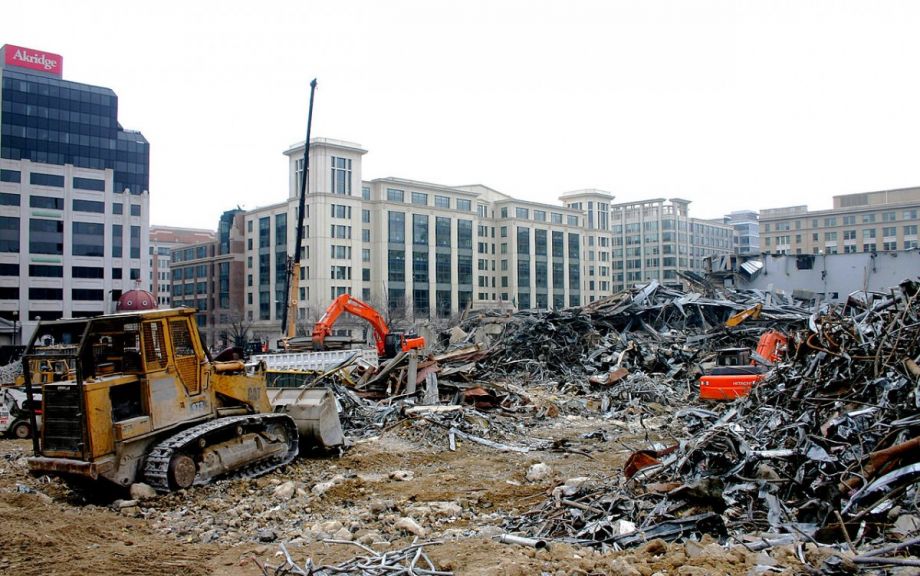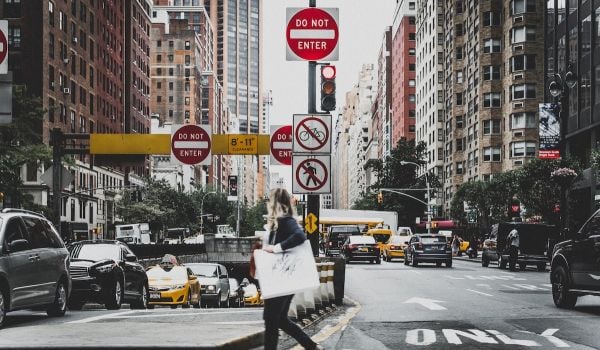The Washington, D.C. area now known as Mount Vernon Triangle was once mostly surface parking lots for a handful of office buildings and the city’s outdated convention center. That’s all changed thanks to serious public and private intervention beginning in 2002, when the city and property owners convened to develop a strategy for the neighborhood.
Now, the 3,000-plus luxury apartments there rent for $2,000 a month and up, and restaurants and shops line the streets. According to a report on D.C. housing that the Urban Institute released today, the population has surged and, from 2002 to 2013, the increase of condo units in the Chinatown/Penn Quarter/Mount Vernon Square area was the biggest such uptick across the city.
In short, Mount Vernon Triangle’s now a walkable, urban neighborhood. There’s even talk of a streetcar line passing through — though that could be a while, as D.C.‘s troubled streetcar program struggles to launch even its first two-mile line.
One of the driving factors in the transformation was a streetscape project the local community improvement district (CID) helped complete on a five-block stretch of K Street, which the International Downtown Association recently lauded as a transformational public space project.
The K Street project was officially completed in 2013, five years after it started. Though only a four-block strip, the changes — adding bike lanes, tree boxes, outdoor seating, simple stuff, really — have helped remake the neighborhood.
While credit must go to developers and retailers in the neighborhood, the streetscape project “gave a sense that things were moving along,” says Bill McLeod, who served as director of the Mount Vernon Triangle CID from 2006 to 2013.
The CID was instrumental in getting the city’s plan implemented as it originally intended.
Over the five or so years between when the city created an “Action Agenda” for the neighborhood and the final plan was settled, DDOT had “simplified” its vision for the intersection that the CID envisioned as the neighborhood’s “town center.” So the CID hired its own architect, presented the plans — which pretty much reinforced the original Action Agenda — to the agency, and DDOT found more money to pay for it.
“I always think, if I don’t do this, no one else will,” McLeod says. “Then every day is sunshine.”
The streetscape construction process wasn’t smooth. Utilities would cut off water or gas to buildings with less than 12 hours’ notice, partly because buildings were springing up so quickly that the utilities couldn’t keep track.
“They’d say, ‘We checked our records and there’s only one building here.’ We’d say, ‘your records are old,’” McLeod says. At one point, he brought the water utility to a contentious meeting. They blamed a consultant. McLeod told them, “Your consultant isn’t doing their job, and you need to know that I’m watching.”
Other relationships were a little more collaborative. McLeod says he met with DDOT reps at least weekly “to problem solve. … I’m a very hands-on person,” he says. But, he says, the trick to a successful relationship is a change of perspective: thinking of how transportation departments build neighborhoods.
“I always want to make DDOT look like the superstar,” he says. “These people work very hard, and they don’t get very much credit. I want to get them at the ribbon-cutting. I want to remind them that they’re doing economic development.”
At a previous main streets organization in D.C., McLeod helmed a streetscape improvement that led to the opening of 50 new businesses in two years, and 12 new sidewalk cafes. In Mount Vernon Triangle, crime dropped by 16 percent and four buildings broke ground. “That’s because of your streetscape,” he would tell DDOT, “and they get a big smile on their face.”
The changes have brought higher incomes and much higher rents to the neighborhood but, says Paul Sieczkowski, who manages the local neighborhood blog, there’s been little displacement thus far. The vast majority of the neighborhood’s development has taken over empty lots rather than older housing stock. However, plans for a nearby Section 8 building hint at how the changes could impact low-income residents in the area: The company that owns the 302-unit apartment building announced earlier this year it would demolish it to make way for luxury condos. (After a public outcry and the threat of emergency legislation that could have stymied the sale, the company has backed off for now.)
As for McLeod, he decamped for another neighborhood. He now runs Historic Dupont Circle Main Streets, which covers an already walkable, urban neighborhood but one whose streets could use a little tweaking — or so McLeod thinks.
“My first month on the job, I met with the DOT,” he says.

Rachel Kaufman is Next City's senior editor, responsible for our daily journalism. She was a longtime Next City freelance writer and editor before coming on staff full-time. She has covered transportation, sustainability, science and tech. Her writing has appeared in Inc., National Geographic News, Scientific American and other outlets.
Follow Rachel .(JavaScript must be enabled to view this email address)


_600_350_80_s_c1.jpg)













